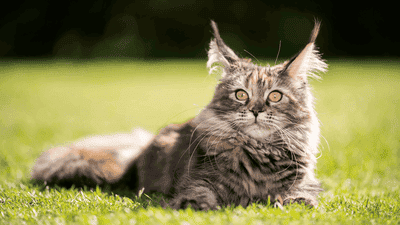Labrador Retriever: Why This Breed Is America's Favorite Dog

The Labrador Retriever is often hailed as America’s favorite dog breed, and with good reason. Known for their friendly demeanor, intelligence, and versatility, Labs have earned their place in countless homes as beloved family companions.
A Brief History of the Labrador Retriever
Origins and Ancestry
The history of the Labrador Retriever can be traced back to the early 19th century in Newfoundland, Canada. They were initially known as the Lesser Newfoundland or St. John’s dog. These dogs were bred by local fishermen to assist in retrieving fish and helping pull nets from the water.
The breed was further developed in the 1800s when English nobles became intrigued by these skilled working dogs. The dogs were imported to England, where they were selectively bred with other breeds, including the now-extinct Newfoundland breed, to enhance specific traits, particularly their retrieving abilities and temperament.
Recognition and Popularity
The Labrador Retriever was officially recognized by the American Kennel Club (AKC) in 1917. Over the decades, the breed became increasingly popular due to its friendly nature and adaptability as both a family pet and a working dog.
By the 1990s, Labradors had taken the title of the most popular dog breed in the United States, a status they have maintained ever since. Their unparalleled appeal can be attributed to their unique combination of traits that make them suitable for various roles, including service dogs, therapy dogs, hunting companions, and family pets.
Physical Characteristics of the Labrador Retriever

Labrador Retrievers are easily recognizable due to their distinctive appearance. Here’s a closer look at their physical traits:
1. Size and Build
Labradors are medium to large-sized dogs, characterized by their solid and muscular build.
- Males typically weigh between 65 to 80 pounds, while females generally weigh between 55 to 70 pounds.
- They stand about 21.5 to 24.5 inches tall at the shoulder.
Their sturdy frame gives them a powerful appearance, which is complemented by their agility and strength.
2. Coat and Color
Labrador Retrievers have a short, dense coat that is water-resistant. The coat provides insulation and aids in their ability to stay warm in colder environments. Labradors come in three primary colors:
- Black: Shiny and sleek, black Labradors are striking in appearance.
- Yellow: This color can range from a light cream to a rich golden hue.
- Chocolate: Ranging from light brown to dark chocolate, these Labradors have a unique charm.
Regardless of color, all Labradors have a characteristic "otter" tail, which is thick at the base and tapers to a point.
3. Facial Features
Labradors have a broad, friendly face with expressive eyes that typically convey intelligence and kindness. Their eyes come in various shades, often brown or hazel. The ears are medium-sized, hanging close to the head, and they have a soft expression that endears them to many.
Temperament and Personality
The Labrador Retriever is well-known for its friendly and outgoing nature. Here are some key personality traits that contribute to their popularity:
1. Friendly and Social
Labradors are incredibly friendly dogs that thrive on social interaction. They generally get along well with children, other pets, and even strangers. Their sociable nature makes them excellent companions and family pets.
2. Intelligent and Trainable
Labradors are known for their high intelligence and eagerness to please, which makes them highly trainable. They excel in obedience and are often used as service dogs due to their ability to learn commands quickly and follow them reliably.
3. Energetic and Playful
Labrador Retrievers are spirited dogs that require regular exercise to keep them physically fit and mentally stimulated. They love to play, whether it be fetching a ball, swimming, or participating in agility training. Their playful demeanor adds joy to families and contributes to their popularity.
4. Gentle and Loving
Despite their size and energy, Labradors have a gentle and loving demeanor. They are known to be patient with children and are often referred to as "gentle giants." This temperament makes them ideal family pets and companions.
Benefits of Owning a Labrador Retriever

Owning a Labrador Retriever comes with numerous benefits. Here are some of the key reasons why this breed is so beloved:
1. Great Family Pets
Labradors are known for their great compatibility with families. Their friendly and gentle nature makes them excellent companions for children. They are playful, tolerant, and protective, contributing to a loving family dynamic.
2. Versatile Working Dogs
Labradors are versatile and can excel in various roles, including:
- Service Dogs: They are commonly trained as guide dogs for the visually impaired, therapy dogs, and emotional support animals.
- Sporting Dogs: Many Labs participate in hunting and retrieving, thanks to their natural instincts.
- Search and Rescue: Their keen sense of smell and intelligence make them ideal candidates for search and rescue operations.
3. Active Lifestyle Companions
If you lead an active lifestyle, a Labrador Retriever can keep up with you. They enjoy outdoor activities such as hiking, swimming, and running. Their high energy levels and love for exercise contribute to a healthy and active lifestyle for their owners.
4. Loyalty and Companionship
Labradors are known for their loyalty and affectionate personalities. They tend to form strong bonds with their families and thrive on human interaction. Their companionship provides emotional support and love, making them wonderful pets.
Care and Training for Labrador Retrievers
Caring for a Labrador Retriever involves attention to their needs, including grooming, nutrition, exercise, and training. Here’s a comprehensive look at how to provide the best care for your Lab:
1. Nutrition
Feeding your Labrador a balanced and nutritious diet is essential for their overall health. Here are some tips for maintaining proper nutrition:
- High-Quality Dog Food: Choose high-quality dog food that lists meat as the primary ingredient. Labs are prone to obesity, so select food appropriate for their life stage (puppy, adult, senior).
- Proper Portion Control: Follow feeding guidelines and monitor your dog's weight to prevent obesity. It’s essential to adjust portion sizes based on activity levels, age, and weight.
- Regular Feeding Schedule: Establish a consistent feeding schedule, providing meals twice a day rather than free feeding. This can help regulate their weight and reduce the likelihood of overindulging.
2. Grooming
Labrador Retrievers have a short, dense coat that requires minimal grooming compared to long-haired breeds. Here are some grooming tips:
- Brushing: Brush your Lab at least once a week to remove loose hair and reduce shedding. During shedding seasons, more frequent brushing may be necessary.
- Bathing: Bathe your Lab as needed, typically every few months, or sooner if they become particularly dirty or smelly. Use dog-specific shampoo to maintain healthy skin and coat.
- Nail Trimming: Regularly check and trim your Labrador's nails to prevent overgrowth, which can be uncomfortable for them.
3. Exercise
Labrador Retrievers are high-energy dogs that require regular exercise to stay healthy and happy. Here are ways to ensure your Lab gets adequate physical activity:
- Daily Walks: Provide at least one to two daily walks, totaling at least 60 minutes of exercise. Incorporate playtime and engage in activities that stimulate both their mind and body.
- Fetch and Retrieving Games: Labradors enjoy playing fetch, which allows them to tap into their natural retrieving instincts while burning off energy.
- Swimming: Many Labs love water and swimming is an excellent way to provide exercise, especially during warmer months.
4. Training
Training your Labrador Retriever is essential due to their intelligence and eagerness to please. Here are some training tips:
- Start Early: Begin training when your Lab is a puppy, focusing on basic commands such as “sit,” “stay,” “come,” and “down.” Early socialization is also crucial for developing good behavior around people and other animals.
- Positive Reinforcement: Use positive reinforcement techniques, such as treats and praise, to encourage good behavior. Labs respond well to positive reinforcement and are motivated by treats during training.
- Consistency: Maintain consistency in commands and training techniques across all family members. This helps prevent confusion and leads to a more well-behaved pet.
5. Health and Veterinary Care
Regular veterinary check-ups are essential for maintaining your Labrador's health. Here’s what you need to consider:
- Routine Vaccinations: Ensure your Lab is up to date on vaccinations to protect them from infectious diseases.
- Preventive Care: Regularly check for parasites, dental health, and any potential health concerns. Discuss spaying or neutering options with your veterinarian.
- Weight Management: Monitor your dog's weight closely, as Labs are prone to obesity. Implement a weight management plan if necessary.
Common Health Issues in Labrador Retrievers

While Labrador Retrievers are generally healthy dogs, they can be prone to certain health issues. Being aware of these concerns can assist in proactive care:
1. Hip and Elbow Dysplasia
Labradors can be genetically predisposed to hip and elbow dysplasia, conditions that affect the joints and can lead to arthritis. Regular vet check-ups and maintaining a healthy weight can help manage these conditions.
2. Obesity
Due to their love of food and tendency to overeat, Labrador Retrievers are at risk for obesity. This can lead to various health issues, including diabetes, joint problems, and heart disease. It’s crucial to monitor their diet and exercise levels closely.
3. Ear Infections
Labradors have floppy ears that can trap moisture and debris, leading to ear infections. Regularly check and clean their ears to prevent infections, especially after swimming or bathing.
4. Progressive Retinal Atrophy (PRA)
PRA is a genetic condition that can lead to vision loss in Labradors. While there is no cure, regular veterinary check-ups can help monitor their eye health.
The Labrador Retriever in Popular Culture
The popularity of the Labrador Retriever extends beyond households; they have made significant appearances in popular culture:
1. Iconic Representations
Labradors are frequently portrayed in movies, television shows, advertisements, and literature, often depicted as loyal companions or heroic figures. Their friendly nature and talent for training make them ideal candidates for various roles.
2. Celebrity Labs
Several celebrities have made their Labrador Retrievers known to the public. From actors with their beloved pups to influencers showcasing their Labs on social media, these dogs continue to capture hearts worldwide.
3. Community and Organizations
Several organizations dedicated to promoting the breed and supporting Labrador Retrievers exist. Clubs such as the Labrador Retriever Club Inc. provide resources for owners, conduct breed education, and host events, fostering a sense of community among Labrador enthusiasts.
Adopting a Labrador Retriever
If you’re considering welcoming a Labrador Retriever into your home, here are some helpful tips for adoption:
1. Choose Reputable Sources
When adopting or purchasing a Labrador, choose reputable breeders or rescue organizations. Research breeders to ensure they prioritize health testing and ethical breeding practices. If adopting from a rescue, inquire about the dog’s history and health status.
2. Prepare Your Home
Before bringing a Labrador into your home, ensure you have all the necessary supplies. Include high-quality food, bowls, toys, grooming tools, and a comfortable sleeping area.
3. Create a Routine
Establish a routine for feeding, exercise, training, and playtime. This structure will help your new Labrador settle in and understand what to expect in their new environment.
Lifestyle and Living with a Labrador Retriever
Welcoming a Labrador Retriever into your family requires an understanding of their lifestyle needs. Here are some considerations for integrating them into your daily life:
1. Family Activities
Labradors thrive on companionship and love being included in family activities. Include them in outings, road trips, and vacations when applicable. Many Labs enjoy being part of the action and make excellent travel companions.
2. Training and Socialization
Continuously engage in training and socialization throughout your Labrador’s life. Ongoing training will reinforce positive behaviors and strengthen your bond.
3. Providing Structure
Labradors function well with structure and routine. This helps them feel secure and enables them to know what to expect from their daily activities.
Conclusion
The Labrador Retriever’s enduring popularity as America’s favorite dog breed is no coincidence. Their friendly nature, intelligence, versatility, and unwavering loyalty make them exceptional companions in countless households.
Whether you’re drawn to their playful personality, impressive intelligence, or gentle demeanor, sharing your life with a Labrador Retriever can be an immensely rewarding experience. By understanding their care requirements and committing to their needs, you can build a strong, loving bond that will last a lifetime.
As you consider adding a Labrador to your family or nurture the one you already have, remember that the joy they bring to your life is immeasurable. They are not just pets; they are beloved family members that enrich our lives in countless ways.







